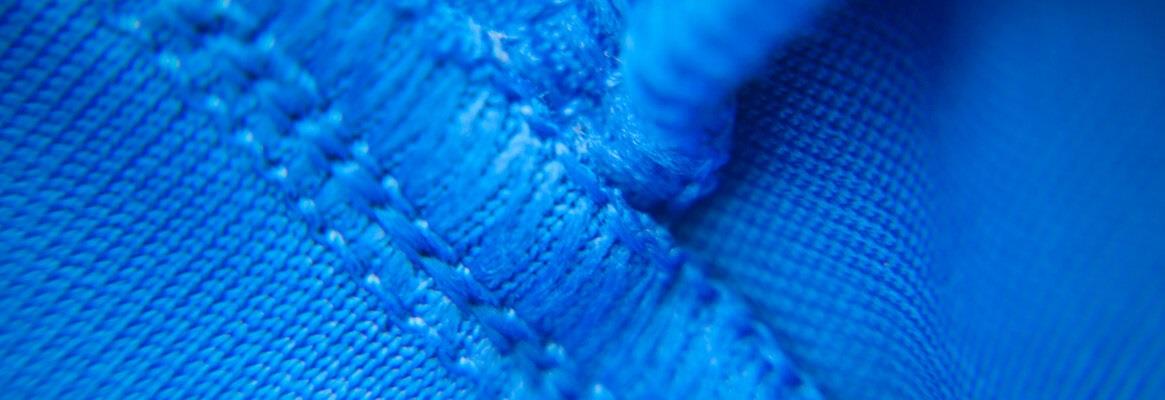The domestic technical textiles market is projected to reach ₹2,00,823 crore by 2020-21 with a CAGR of 20 per cent. To keep up with the growth and focus on more environment-friendly fibres, textile companies are developing fibres out of recycled materials and natural sources for technical textiles.
When most people think of textiles, they think about traditional textiles meant for clothing or home furnishings. However, the use of textiles is considerably more diversified and hi-tech than what most assume. Non-traditional or technical applications of textiles account for nearly 27 per cent of the global textile market; in some Western countries, its share is 50 per cent while in India it is 11 per cent. The technical textile sector is counted to be one of the fastest growing sectors.
Technical textiles are materials that focus more on performance rather than appearance and are currently in demand in multiple industries. According to a report by Fortune Business Insights that analysed the sector from 2019 to 2026, the market value of technical textiles was valued at $159.29 billion in 2018 and is expected to grow at a compounded annual growth rate (CAGR) of 2.7 per cent between 2010 and 2026.
The technical textiles industry in India was valued at ₹1,16,217 crore in 2017-18. The domestic market is projected to reach ₹2,00,823 crore by 2020-21 with a CAGR of 20 per cent. The key growth drivers for the Indian technical textile market include increasing consumer income levels, growing end-user industries like automobiles, healthcare, sports etc and overall infrastructure and industrial development. The initiatives taken by the government in attracting investments in technical textiles will also drive its growth.
The sector consists of both natural and synthetic fibres but the synthetic fibre segment holds the largest revenue share in the global technical textiles market. Some of the synthetic fibres used in this industry are nylon, polyester, acrylic, olefin, PLA and modacrylic. Some fibres with special properties are saran, vinalon, vinyon, spandex, sulphar, twaron, kevlar, nomex, zylon, dyneema/spectra and vectran. All these fibres are produced from petrochemicals and emit considerable amounts of carbon dioxide. To ensure their commitment towards preservation of the planet and provide us with sustainable solutions for the textile industry, many textile companies have developed fibres from recycled materials and natural sources for technical textiles in recent years. Here are some of the newly developed sustainable fibres:
1. DuPont Apexa fibre: DuPont Apexa is an eco-friendly degradable polyester that decomposes through industrial composting without harming the soil or environment. Developed through a patented and innovative technology, the fibre breaks down into simple CO2 and H2O, reducing textile waste and limiting environmental impact. Compared to conventional degradable plastics like polylactic acids and polybutylene succinate, Apexa excels in durability and heat-resistance. In addition to minimising textile waste, it also blends with natural fibres like wool, cotton or cellulose to enhance their attributes, making them stronger, softer and more durable. Japanese sportswear manufacturer Goldwin started marketing sportswear using Apexa fibre.
2. DuPont Sorona fibre: Dupont Sorona fibre is a partially biobased PTT polyester polymer with 37 per cent annually renewable plant-based ingredients, i.e corn and corn starch. Its life cycle assessment shows that the manufacture of Sorona requires 30 per cent less energy and releases 63 per cent fewer greenhouse gases than the production of Nylon 6. In comparison to Nylon 6.6, Sorona consumes 40 per cent less energy and reduces greenhouse emissions by 56 per cent. It is primarily used in textiles for apparel and home, office and automotive interiors, residential and commercial carpeting and automotive mats.
3. Jutecell fibre: Jutecell fibre is a new type of regenerated cellulose fibre produced from jute and kenaf through a special process developed by Shandong Helon Co Ltd. The special manufacturing technology imparts the fibres bacteriostatic, bactericidal and anti-fungal properties. Besides this, the denier and the length can be adjusted according to the spinning order. The fibre is biocompatible, environment-friendly, and has applications in healthcare, fashion and home textiles sectors. It has high tensile strength, low extensibility and ensures better breathability of fabrics.
4. Avra fibre: Developed by Eastman, Avra is a revolutionary fibre technology made up of cent per cent post-consumer recycled PET. In knit fabrics of similar construction and weight, Avra's performance fibres provide excellent drape and softness. Fabrics made with Avra help keep the body cool during a workout. With no additional chemistry needed, Avra's lightness, flexibility, and breathability provide performance that can be felt by the wearer. Avra fibres are suitable for making fabric for activewear.
5. EcoSure PET fibre: EcoSure polyester fibres are produced from 100 per cent recycled post-consumer PET containers. Both EcoSure Wellstrand (heavy denier) and EcoSure fibres are certified by Scientific Certification Systems (SCS) and made from 100 per cent PCR polymer. EcoSure staple products are available in 1.2-500 denier. EcoSure is suitable for hygiene (wipes, diaper linings, etc), industrial non-woven products (industrial wipes, furniture, automotive, filtration, insulation, scrub pads, foam-replacement seat cushions), geotextiles for erosion control like American Excelsior Recylex, where 100 per cent of loose web is made from EcoSure, and all types of textile products like apparel, socks and home fabrics.
6. Coolmax EcoMade fibre: Coolmax EcoMade fibres are made from 97 per cent of recycled resources like plastic bottles and help to keep plastic bottles out of landfills. To create the fabric, used plastic bottles are cleaned and transformed into a polyester yarn to be used in apparel products. Fabrics made from these keep the wearer cool, dry and comfortable by moving moisture away from the skin to the surface of the fabric where it evaporates. These are often used in activewear.
The consumption of man-made fibres in technical industries is very high, which results in increase of greenhouse gases. Time has come to focus more on eco-friendly fibres. The use of eco-fibres and recycled fibres are the best solutions to keep our environment clean and minimise global warming.
References:
1.http://texmin.nic.in/sites/default/files/scheme_technical_textile_070116.pdf
2.https://www.whatech.com/market-research/materials-chemicals/658061-technical-textiles-market-2020-growth-segments-by-size-share-key-news-and-top-companies-overview-to-2026.
3.http://texmin.nic.in/sites/default/files/Textiles-AnnualReport2018-2019%28English%29.pdf.
4.https://www.fortunebusinessinsights.com/technical-textiles-market-102716.
5.https://www.fibre2fashion.com/industry-article/2427/important-fibres-of-technical-textile-industry-part-i.
6.https://www.innovationintextiles.com/sustainable/new-biodegradable-polyester-fibre-for-apparel-solutions/.
7.https://www.toyobo-global.com/system/files/News_Release/201902/press20171211.pdf.
8.http://sorona.com/press-release/dupont-expands-kinston-north-carolina-facility-to-meet-growing-global-demand-for-soronar-polymer/
9.https://www.scientific.net/AMR.627.33.
10.https://www.fibre2fashion.com/news/textile-news/eastman-chemical-launches-avra-performance-fibre-191109-newsdetails.htm.
11.https://www.poolecompany.com/files/Wipes_with_Recycled_Fibers_Household_and_Personal_Care_Wipes_Magazine_Article_Fall_2011.PDF.
12.https://coolmax.com/en/Technologies-and-Innovations/COOLMAX-technologies/EcoMade.








